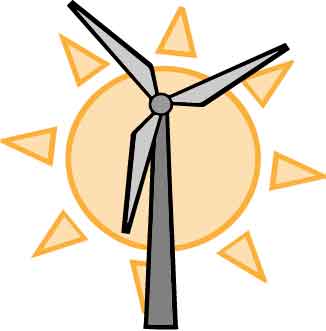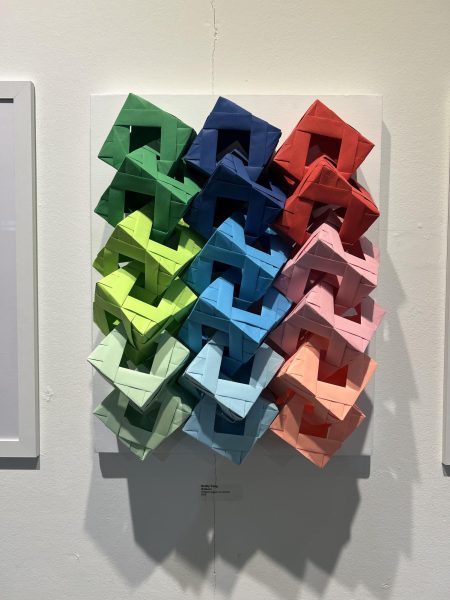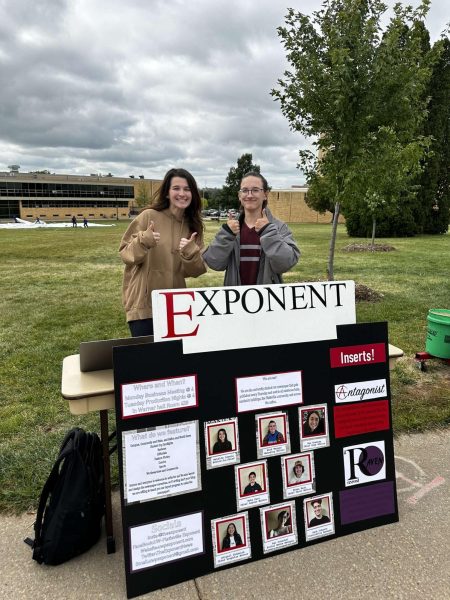Changing the landscape of renewable energy
RENEW Wisconsin’s Tyler Hueber presentationed on local developments.

Elizabeth Kaiser graphic.
Tyler Hueber introduced himself as the executive director for RENEW Wisconsin, a nonprofit organization dedicated to building a stronger, healthier and more vibrant Wisconsin through the advancement of renewable energy. This organization focuses on policies and programs that support solar power, wind power, biogas, local hydropower, geothermal energy and electric vehicles.
Hueber explained that the costs of wind and solar equipment have gone down a lot since 2009. To demonstrate this point, he explained that it took about 13 years to find a buyer to support the wind farm in Darlington, Wisconsin. During those 13 years, the cost of wind power systems dropped about 69 percent. Since 2009, the cost of solar power systems also went down about 88 percent. These declines in cost have made wind and solar the least expensive methods to produce power without financial subsidies.
Solar power systems currently produce 103 megawatts of Wisconsin’s energy, an amount that took 35 years to achieve. In that time, wind power systems also grew to produce about 737 megawatts of Wisconsin’s energy.
Several large companies have made the switch to renewable energy. For example, American Family Insurance filled the roof of its headquarters with solar panels.
Major utility providers have also been making commitments to renewable energy and to becoming carbon-free by 2050. If they achieve these goals, the percentage of renewable energy produced in Wisconsin could jump from about 12 percent to 62 percent.
“Corporate America is behind this push for renewable energy in a big way,” Hueber said.
The cause for this, according to Hueber, is customers supporting renewable energy. It’s what the customers, investors and the workers want. As more millennials filter into the workforce, they bring with them the large desire to make a difference.
It’s not only the big-cost corporations working towards carbon-free energy, however. Walmart, McDonalds, Procter & Gamble and other companies with affordable goods are beginning to see that renewable energy is the new way. Organic Valley in Wisconsin is a prime example of a company with the goal of 100 percent renewable energy.
Hueber shared that 95 percent of people in America want to expand the use of solar power, and 91 percent want to see a larger use of wind power. He expressed that surveys hardly ever return results this “drastic”; the large majority of people support renewable energy.
Hueber explained that we are bringing coal and other resources into Wisconsin from other states, while solar and wind power use the materials and resources that are already available here. Plus, pollinator habitats can be planted beneath solar panels, helping to support dwindling bee populations. It is, in his opinion, a “win-win opportunity.”
He described renewable energy as homegrown, healthy, and smart, bringing and keeping jobs in the state.
Hueber mentioned a few big projects based in Southwest Wisconsin that were in the last stages of approval at the time of the presentation, one of which is the Badger Hollow Solar Farm Project, a solar farm that could provide 300 megawatts of energy and would power about 77,100 homes, reducing about 370,000 tons of carbon annually. Also, the Red Barn Wind Farm Project could produce 99 megawatts, potentially providing power from 25 turbines to approximately 52,300 homes annually.
One large development in renewable energy is electric vehicles. About 28 percent of carbon emissions in the U.S. come from transportation. In an effort to bring this number down, all of the major vehicle brands are looking to make electric cars, and there are quite a few prototypes in the works.














